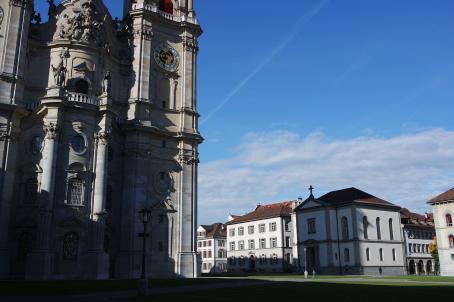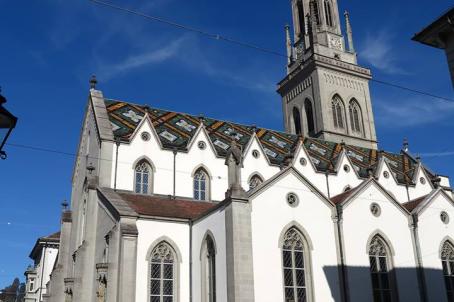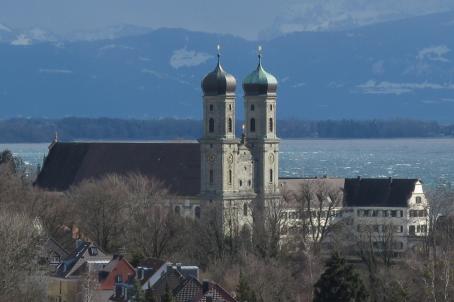St. Gallen Cathedral
The Cathedral of St. Gallen, built in 1755-1772, is part of the monastery complex of St. Gallen. The collegiate church was registered with the abbey district in 1983 as a UNESCO World Heritage Site.
The Cathedral of St. Gallen, built in 1755-1772, is part of the monastery complex of St. Gallen. The collegiate church was registered with the abbey district in 1983 as a UNESCO World Heritage Site.

St. Gallen Abbey, founded in 613, is the oldest monastery in Switzerland. Very little remains of the medieval abbey. Between 924 and 933, the invasion of the Magyars threatens the abbey, and books and parchments from the library are sent to Reichenau; most are returned to St. Gallen once the risk of looting has passed. During this looting, St. Wiborada is killed. She is the first woman to be canonised by Pope Clement II in 1047. Most of the buildings, including the abbey church, were built between 1755 and 1768 in the Baroque style. Its rococo library is one of the most important monastic libraries in the world, housing one of the most comprehensive collections of early medieval manuscripts in German-speaking Europe.

The St. Lawrence Church is the Reformed-Protestant parish church of the city of St. Gallen. It is estimated that the construction of the first church took place in the middle of the 12th century. The church was for centuries the political, religious and social centre of the city of St. Gallen as a meeting place for citizens of the city. The church is classified as a national protected building.

The Schlosskirche was part of the Hofen Monastery, built between 1695 and 1702. In 1803, the imperial Weingarten Monastery, to which the Hofen Monastery belonged, was secularised. The monastery complex with the church was assigned to the Württemberg court estate, which made the church building available to the newly founded Protestant parish of Friedrichshafen in 1812. On 28th April 1944, during a bombing raid during the Second World War, the church was severely damaged. During the reconstruction of the church from 1949 to 1954, the missing stucco was added by Josef Schnitzer in a simpler form based on old photos.